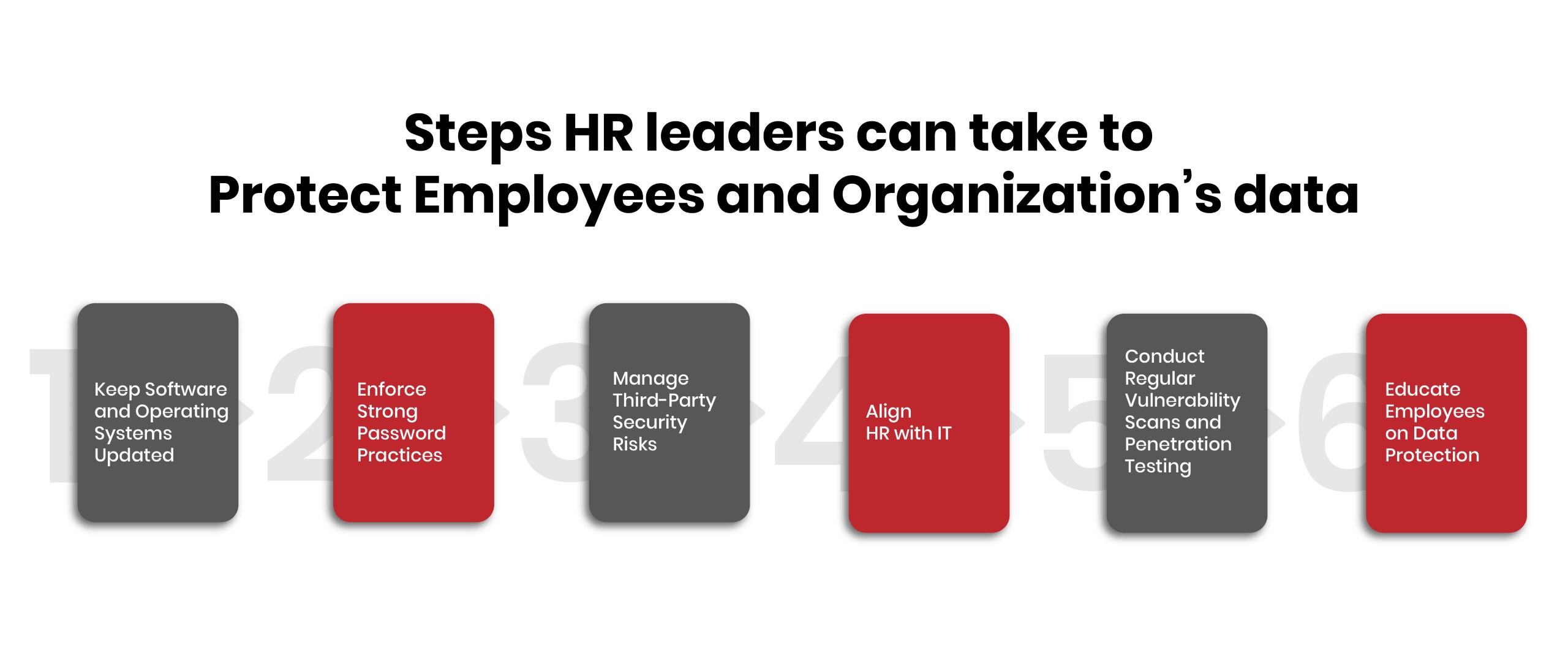Data privacy is no longer confined to banks and credit card companies; safeguarding employee information has become a crucial element of an organization’s overall cybersecurity strategy. As reliance on advanced HR technologies grows—whether in large enterprises or small businesses—ensuring the privacy of sensitive data remains a significant challenge.
Below we explore the pivotal role HR professionals play in securing employee data. It talks about recent data breaches, outlines best practices for HR data security, highlights the importance of compliance, and reviews global privacy laws. Let’s begin!
Data privacy in HR technology involves safeguarding personal information collected and stored by organizations, which is crucial in today's business landscape where employee data—ranging from contact details to financial and health information—is routinely processed.
HR departments face ethical considerations in handling this data, balancing the need for informed decision-making with the responsibility to ensure that data collection and storage practices are lawful, fair, and transparent. Effective data privacy protocols are essential for protecting individuals' information and establishing trust and credibility within the workplace.
Here’s the list of some of the biggest data breaches in the past few years:
As organizations increasingly adopt the latest HR technology, their digital data footprint expands significantly. Given the increasing complexity of cyber threats, HR departments are stepping up their role in cyber risk management. HR professionals are tasked with developing and implementing robust data protection policies, educating employees on best practices, and ensuring compliance with relevant laws and regulations.
Innovations such as Automated Talent Acquisition, Intelligent Identity Access Management, AI-Enabled Employee Training Management, AI-Driven Applicant Tracking Systems (ATS), and AI-Powered Background Screening Solutions are now integral to modern HR practices. These tools digitally capture sensitive Personally Identifiable Information (PII), necessitating enhanced cybersecurity measures.
These advanced systems automate security protocols, analyze large volumes of data, detect anomalies and potential threats, and respond rapidly to cyberattacks. By proactively addressing data security, HR can bridge the gap between data protection and personnel management, fostering a secure and productive work environment.
Let’s look at how with simple steps HR leaders can protect employees and organization’s data: 
Account vulnerability is another common security threat, often caused by weak authentication or poor password management. Outdated software can lead to issues like bugs, frequent system crashes, and security vulnerabilities. Regular updates introduce new features, enhance productivity, and most importantly, strengthen system security. Updated software improves protection against common threats and ensures compatibility with other installed programs. Human resources should ensure that all systems are updated regularly to protect HR data.
HR departments are often targets for phishing and password attacks, where cybercriminals use malware to steal sensitive data. To counter this, it's crucial to establish and enforce strong password practices across the organization. HR should collaborate with IT to train employees on protecting their accounts. Best practices include:
Engaging with external service providers can expose organizations to third-party security risks. If a vendor is compromised, it can affect the organizations they serve. To mitigate these risks, consider:
For enhanced HR data security, the HR and IT departments need to work closely together. This collaboration helps HR identify protective tools and build a robust security system. Effective communication between these departments ensures informed decisions about software purchases and security measures.
To strengthen HR data security, regularly scan for vulnerabilities and conduct penetration testing. Vulnerability scanning can be automated, while penetration testing requires hands-on efforts to identify system weaknesses. Detecting and addressing these weaknesses promptly ensures data protection.
Empower employees to protect their data proactively by educating them on best practices. Teach them how to conduct safety audits, store data securely, and identify suspicious emails. By using secure collaboration platforms, organizations can centralize communication and data management, reducing the risk of cyberattacks.
HR professionals must navigate various privacy laws to protect employee data and ensure compliance. Key global laws and frameworks include:
In addition to these laws, the ePrivacy Regulation (ePR) in the EU complements the GDPR by regulating electronic communications, while the APEC Privacy Framework promotes data privacy across borders in the Asia-Pacific region. Global best practices like Privacy by Design emphasize integrating privacy into system designs, and OECD guidelines provide a framework for international data protection.
HR data breaches can significantly damage businesses by eroding employee trust and potentially reducing productivity. Declining employee morale is a common consequence. As technology evolves, the importance of HR data security grows. HR departments must stay vigilant against emerging cybersecurity threats and adhere to evolving privacy regulations to safeguard employee information. By keeping up with data protection trends, investing in robust security tools and technologies, and promoting a culture of data security awareness, HR professionals can help their organizations maintain compliance and security in a dynamic digital environment.
This website uses cookies to enhance website functionalities and improve your online experience. By browsing this website, you agree to the use of cookies as outlined in our privacy policy .